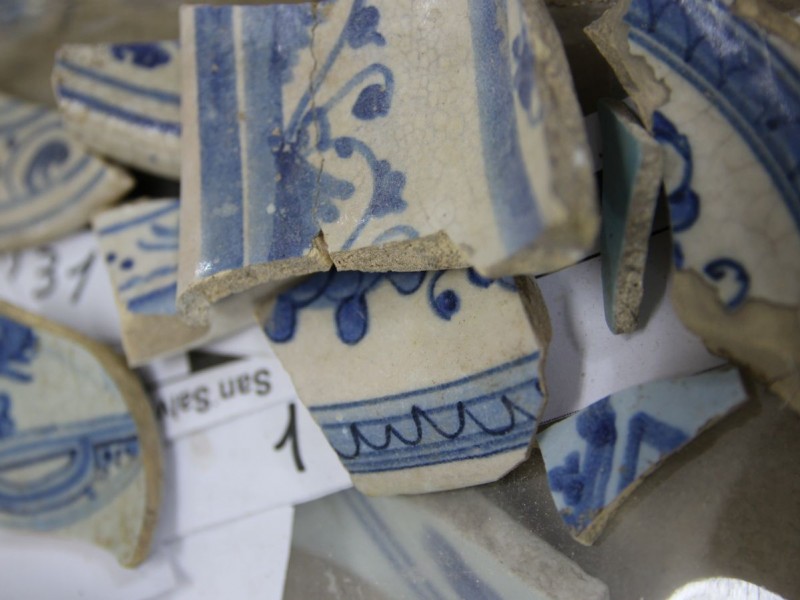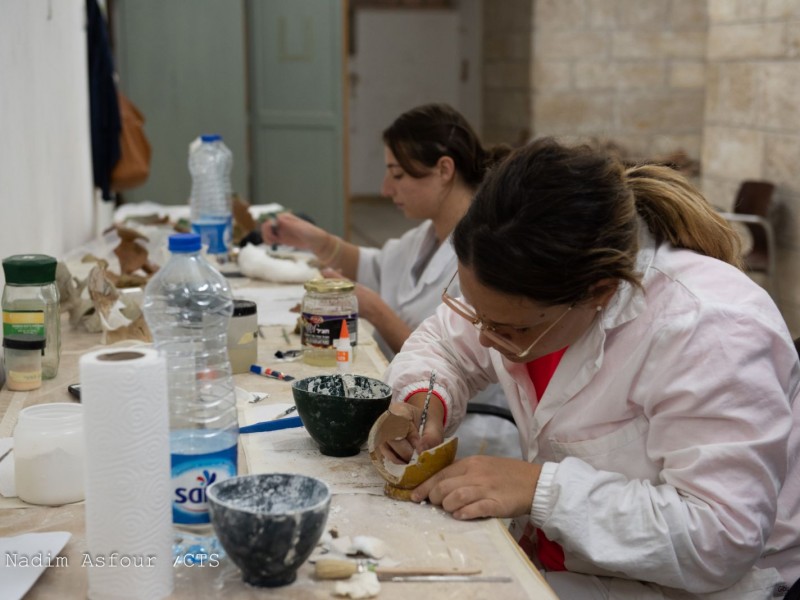Archaeological excavations : « These ceramics are a treasure of historical data”
TERRASANCTAMUSEUM/MEETING: Interview with Stefania Peluso, archaeologist at the Custody of the Holy Land, entrusted with the study of the ceramic collection, dating from the 15th and 16th centuries, recovered beneath the future historical wing of the Terra Sancta Museum.

What is remarkable about the collections of ceramics found under the sacristy of St. Savior?
The materials found under the sacristy of St Savior church are a treasure-trove of historical data. It allows us to reconstruct the presence of the Franciscan Order in the holy land and the history of the S. Savoir convent. The most important part of the collection—dated to 15th – 16th centuries—concerns the daily life of Franciscans in the Cenacle.
What pertains to this period?
This not well-known period, wherein the Franciscans were driven out from the Cenacle and had to move to the convent of St. Savior. The life of the friars in Jerusalem is not well understood. Still, the materials found show that the friars had already an apothecary activity during their residence in the Cenacle. They acquired precious vessels of different shapes and origins when gathering the famous collection of pharmaceutical pottery displayed today in the convent of Flagellation. Found also were many glass and many vessels that were used for the preparation of the syrups and ointments. Thanks to the discovery of this collection it is possible to supplement the information found in our sources about the Franciscan community life, that is Verniero’s chronicles and the book of Father Horn. These do not describe the daily life of the Franciscans in the Cenacle, neither do they offer a commentary of the objects used by the religious during the most oldest epoch of their residence.

What else does this collection tell us about how the Custody of the Holy Land was organised in this period?
Many bowls of pottery imported from Venice, first of all, indicate the existence of a community of about 20/25 people and a rather close relationship between the Franciscan and the Serenissima Republic. At the same time, the pottery indicates that there was a hierarchical difference between the religious because there is a group of luxurious bowls probably pertaining to the Custos and to the executive’s coterie. Furthermore, the presence of imported pottery from Spain and other parts of the Mediterranean area testify that the Friars had many connections and were at the centre of a large network of economic, diplomatic and trade routes.
Certain pieces be exhibited in the museum, yes? Why would these be interesting for the public?
The discovery of the old pharmacy related to the convent of Cenacle is important for the public and for visitors because it shows the role played by the Friars since their arriving in the Holy Land. The existence of a well-organized pharmacy testifies that the Franciscan took care of pilgrims and the Christian community living there, as well as guarding the holy places and evangelizing the area. Thanks to their knowledge and abilities in pharmacopoeia the Franciscans ingratiated themselves to the local Muslim community. The friars, in fact, healed all people that needed help regardless of their religion and social status, thus becoming well known and respected.




